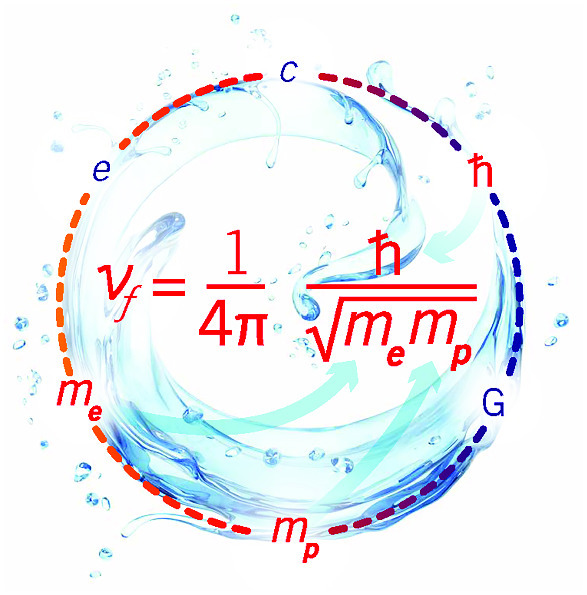https://doi.org/10.1140/epje/s10189-024-00467-y
Regular Article - Flowing Matter
Extrinsic and intrinsic effects setting viscosity in complex fluids and life processes: the role of fundamental physical constants
1
School of Physical and Chemical Sciences, Queen Mary University of London, Mile End Road, E1 4NS, London, UK
2
CERN EU Office, Geneva, Switzerland
3
Biochemistry and Biophysics (Emeritus), University of Pennsylvania, Philadelphia, USA
4
Center for Life Nano Science@La Sapienza, Istituto Italiano di Tecnologia, Viale Regina Elena 291, 00161, Rome, Italy
5
Department of Physics, Harvard University, 17 Oxford Street, 02138, Cambridge, MA, USA
Received:
2
October
2024
Accepted:
4
December
2024
Published online:
3
January
2025
Understanding the values and origin of fundamental physical constants, one of the grandest challenges in modern science, has been discussed in particle physics, astronomy and cosmology. More recently, it was realized that fundamental constants have a biofriendly window set by life processes involving motion and flow. This window is related to intrinsic fluid properties such as energy and length scales in condensed matter set by fundamental constants. Here, we discuss important extrinsic factors governing the viscosity of complex fluids operating in life processes due to collective effects. We show that both extrinsic and intrinsic factors affecting viscosity need to be taken into account when estimating the biofriendly range of fundamental constants from life processes, and our discussion provides a straightforward recipe for doing this. Remarkably, the viscosity of a complex fluid such as blood with significant extrinsic effects is not far from the intrinsic viscosity calculated using the fundamental constants only, and we discuss the reason for this in terms of dynamics of contact points between cells.
© The Author(s) 2024
 Open Access This article is licensed under a Creative Commons Attribution 4.0 International License, which permits use, sharing, adaptation, distribution and reproduction in any medium or format, as long as you give appropriate credit to the original author(s) and the source, provide a link to the Creative Commons licence, and indicate if changes were made. The images or other third party material in this article are included in the article’s Creative Commons licence, unless indicated otherwise in a credit line to the material. If material is not included in the article’s Creative Commons licence and your intended use is not permitted by statutory regulation or exceeds the permitted use, you will need to obtain permission directly from the copyright holder. To view a copy of this licence, visit http://creativecommons.org/licenses/by/4.0/.
Open Access This article is licensed under a Creative Commons Attribution 4.0 International License, which permits use, sharing, adaptation, distribution and reproduction in any medium or format, as long as you give appropriate credit to the original author(s) and the source, provide a link to the Creative Commons licence, and indicate if changes were made. The images or other third party material in this article are included in the article’s Creative Commons licence, unless indicated otherwise in a credit line to the material. If material is not included in the article’s Creative Commons licence and your intended use is not permitted by statutory regulation or exceeds the permitted use, you will need to obtain permission directly from the copyright holder. To view a copy of this licence, visit http://creativecommons.org/licenses/by/4.0/.





